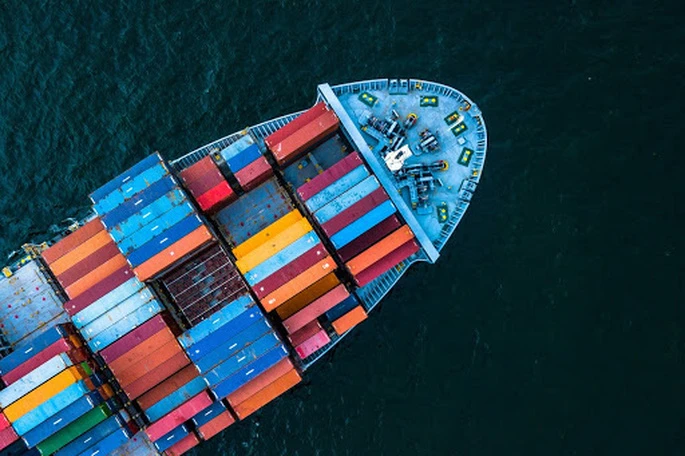
Worrisome situation
In August, exports reached the highest level, ending the stagnant pace since the beginning of the year, and bringing the eight-month export turnover to about USD 174 bn, up 1.6% over the same period in 2019. The eight-month import turnover reached USD 162.2 bn, down 2.2% over the same period in 2019, while trade surplus was at USD 11.9 bn compared to USD 9.9 bn in 2019.
However, if we do not adjust the target for the whole year, the last four months of the year will see a turnover of USD 108 bn, or USD 27 bn each month. This is bringing huge pressure, and if we want to increase to USD 300 bn, we have to export USD 126 bn more, which means that each month exports must reach USD 31.5 bn, while the average has only been USD 21.5 bn per month in the last eight months, so this is very difficult to achieve. Although by the end of August, 27 items reached the USD 1 bn mark, many of these items were not in par with last year. These included seafood, vegetables, cashew nuts, coffee, textiles, fiber, footwear, leather, footwear materials, bags, suitcases, umbrellas, phones, and cameras.
The decline of each item was due to many troubles that were difficult to resolve. For example, although we have delicious vegetables and sweet fruits available, if we want to please the customers we must have them irradiated. Recently, when an American irradiation technician came here during the pandemic, the equipment used to irradiate got jammed. India also wants to tighten import standards. In addition to the 14% cut in export price of cashew nuts, many shipments were also returned. The Vietnam Cashew Association has now decided to lower the cashew nut export target in 2020 from USD 4 bn to USD 3.2 bn.
At present, in the area of textiles, leather, shoes, and bags, all machinery is fully ready, there are enough workers and sufficient raw material to start, but unfortunately there are no new orders coming. For example, the impact of the Covid-19 pandemic on the textile and garment export industry has affected the buying markets such as the US and Europe, and about 80% of Vietnam's exports are nearly paralyzed. Many textile and apparel companies in Vietnam have not received any high-value orders such as suits and high-end shirts, but are producing face masks and protective gear, which are serving as lifesaving orders for many companies. According to forecast, if the situation does not improve soon, there will be unpredictable risks to both micro and medium enterprises.
Regarding textile and garment exports to the EU, there will be about 77% of export turnover. In the short term, in order to enjoy the tax exemption offered under EVFTA, we must meet all the requirements such as products of origin. Fabric produced domestically can only meet about 30% of the demand, so it is necessary to combine fabrics from South Korea and Japan, the two countries with the same FTA with the EU and Vietnam, accounting for 23% of fabric imports to Vietnam.
EVFTA brings respite
The bright spot for exports is rice. Rice prices are currently increasing by about 11%, some surpassing Thailand, to be the highest in the world. This is due to improved quality of Vietnamese rice, and the relatively large demand for import of rice in the world, especially by Southeast Asian countries, as supplies from major exporting countries have decreased. However, the rice export from the beginning of the year until now is mainly through small contract orders. The highest price of Vietnamese rice is only for the same type as Thailand and India, two countries producing specialty rice with high nutritional content and suitable for rich tastes.
However, Vietnam's exports to the EU will have to face the risk of applying trade remedies. The EU is currently one of the three markets that applies trade remedies the most, focusing on and targeting our key export groups such as phones, electronics, footwear, textiles, and wooden products.
Since EVFTA took effect, seafood export orders to the EU in August increased by about 10% compared to July. Recently, the Ministry of Agriculture and Rural Development cooperated with Ninh Thuan province and the EU Delegation in Vietnam to organize a ceremony to celebrate the first export batch of frozen shrimp products from Vietnam to some European countries. Only the Thuan Phuoc Fisheries and Trading Company in Da Nang province has exported 3,000 tons of shrimp and products processed from shrimp to the EU eight months ago, reaching about USD 31 mn, up 8% in quantity and 6% in turnover over the same period in 2019. Currently, the EU is one of the four largest seafood import markets and is stable at around USD 1.3 bn per year, accounting for about 17% of total seafood export turnover in Vietnam.
Recently, the Government issued Decree 103/2020/ND-CP, which will provide certification for fragrant rice to be exported to the EU market. On this basis, the Ministry of Industry and Trade announced 7,200 C/O units, which were issued in August, with a total turnover of USD 277 mn exported to 27 EU countries. At the same time, the ministry has also coordinated with other ministries, agencies and localities to open several training courses for businesses to absorb and learn the best ways to address this market.
The time has come for Vietnamese businesses to support and invest in growth enterprises, increase production, encourage businesses to use advanced technologies, reduce environmental pollution, prevent the resurgence of disease, focus on innovative products with high added-value, catch up with market demand, and create confidence in customers and markets worldwide.




















